Trees Names
Building your vocabulary is an essential step in learning any language. Knowing the names of common trees around you not only improves your English skills but also helps you understand nature better. In this article, you will learn the names of a wide variety of trees from across the world, including fruit trees, flowering trees, and evergreen trees. Explore these tree names to enhance your vocabulary, recognize plants, and connect more with the environment.
Table of Contents
- 10 Tree Names in English with Pictures
- List of 100+ Tree Names in English
- How Trees Help Us
- Frequently Asked Questions on Tree Names
10 Tree Names in English with Pictures
Learning tree names helps kids know more about nature. They learn which tree gives which fruit, what wood is used for, and how trees help the Earth. Knowing tree names and pictures improves memory and builds a strong connection with the environment.
-
Mango Tree
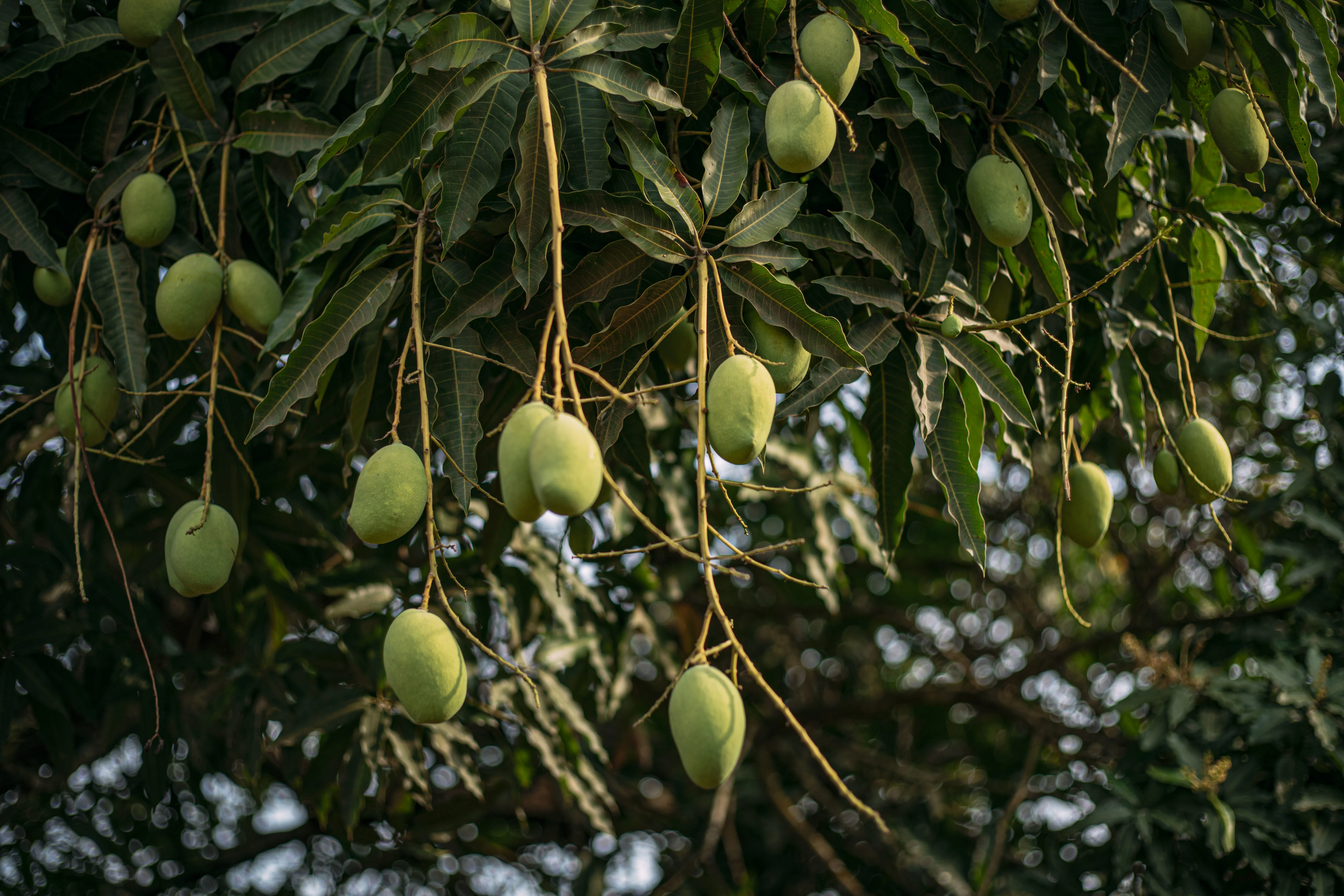
The mango tree gives us the "king of fruits." It grows in warm places and can live for many years. Its leaves are long and shiny, and its fruits are sweet and juicy.
Special Facts:
-
Can grow up to 100 feet tall
-
Gives fruits in summer
-
The national fruit of India comes from this tree
-
Its wood is used to make furniture
-
Banyan Tree
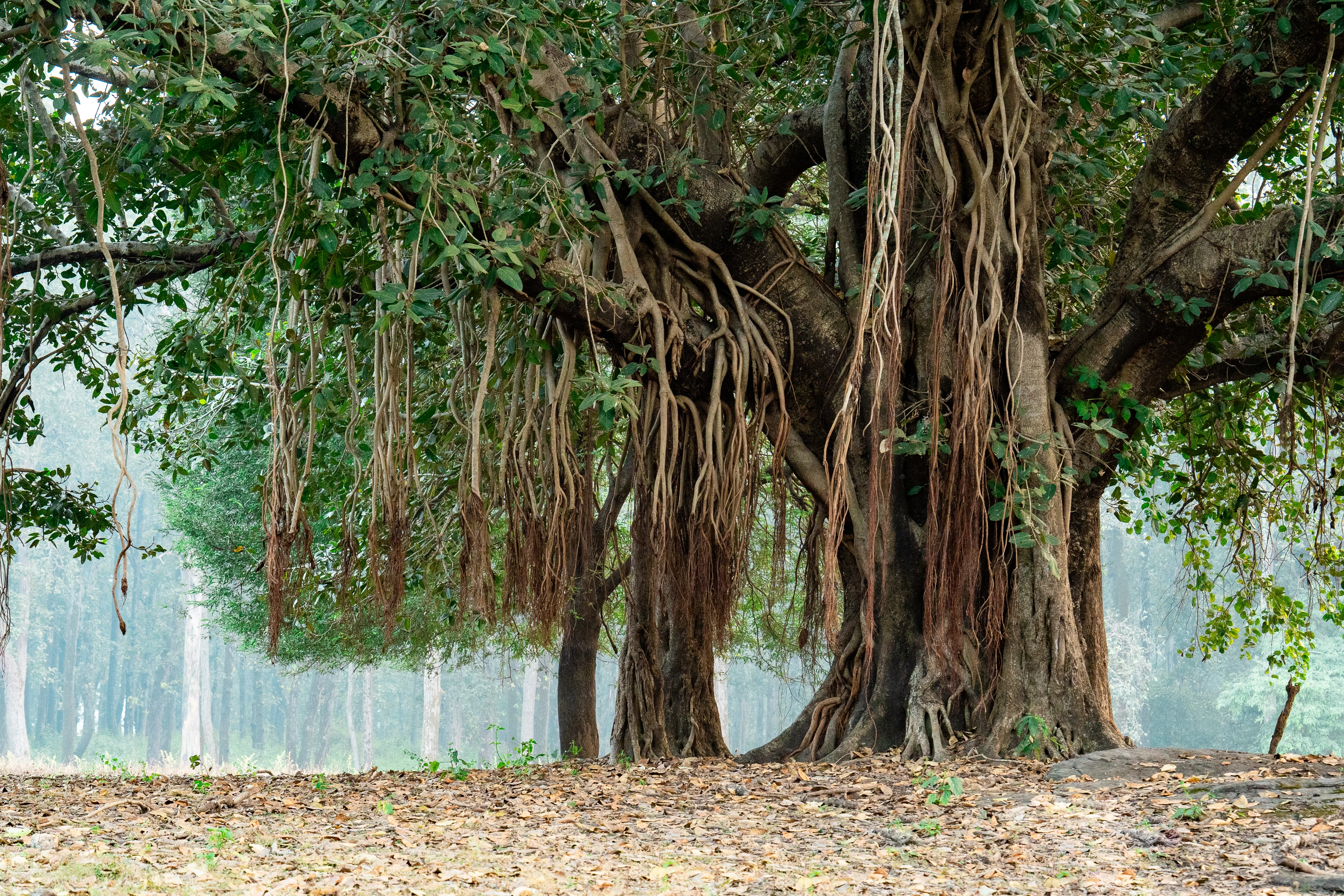
The banyan tree is one of the biggest trees. It has many aerial roots that grow down from its branches and become new trunks. It is also the national tree of India.
Special Facts:
-
It can cover a huge area with its roots and branches
-
Some banyan trees are hundreds of years old
-
Its leaves are large and glossy
-
It stays green all year round
-
Peepal Tree
The peepal tree is also called the sacred fig. It has heart-shaped leaves that make a rustling sound in the breeze. It is considered holy in many cultures.
Special Facts:
-
Releases oxygen even at night
-
Has leaves that never stop moving
-
Can live for over 1,000 years
-
Has heart-shaped leaves with a pointed tip
-
Neem Tree
.webp)
The neem tree is famous for its healing properties. Every part of this tree, from its leaves to its bark, has medicinal uses.
Special Facts:
-
Natural insect repellent
-
Used in many medicines
-
Has bitter-tasting leaves
-
Stays green throughout the year
-
Oak Tree
The oak tree is known for its strength and durability. It produces acorns and has strong wood that is used for making furniture.
Special Facts:
-
Symbol of strength and endurance
-
Can live for hundreds of years
-
Has lobed leaves
-
Provides food for many animals
-
Coconut Tree
.webp)
The coconut tree grows in coastal areas and is known as the “tree of life” because every part of it is useful. Its tall trunk, large leaves, and round coconuts make it one of the most recognizable tropical trees.
Special Facts:
-
Found mainly in warm coastal regions
-
Provides coconuts, which give water, oil, and fiber
-
Its leaves are used for roofing and making mats
-
Symbol of tropical beaches and warm climates
-
Pine Tree
.webp)
The pine tree is an evergreen tree that grows in cold or hilly regions. It has needle-shaped leaves and produces cones instead of flowers. Its wood is used for making paper and furniture.
Special Facts:
-
Stays green throughout the year
-
Produces pinecones that contain seeds
-
Commonly found in mountain areas
-
Used for making Christmas trees
-
Apple Tree
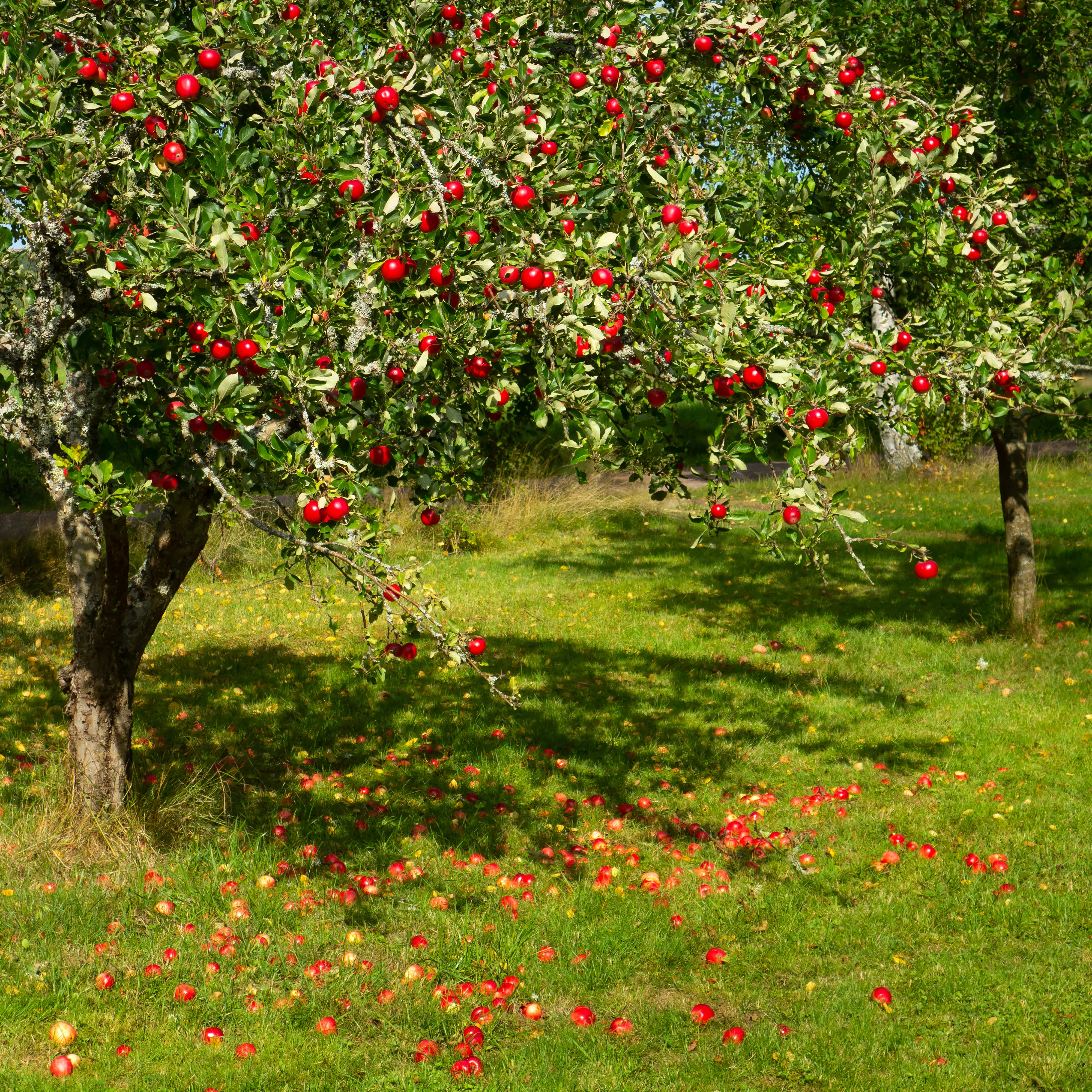
The apple tree is a fruit-bearing tree that grows in cool climates. It has beautiful white or pink blossoms and produces sweet, juicy apples loved by people around the world.
Special Facts:
-
Produces apples in autumn
-
Needs cold weather to grow well
-
Symbol of health and knowledge
-
Bees help pollinate its flowers
-
Teak Tree
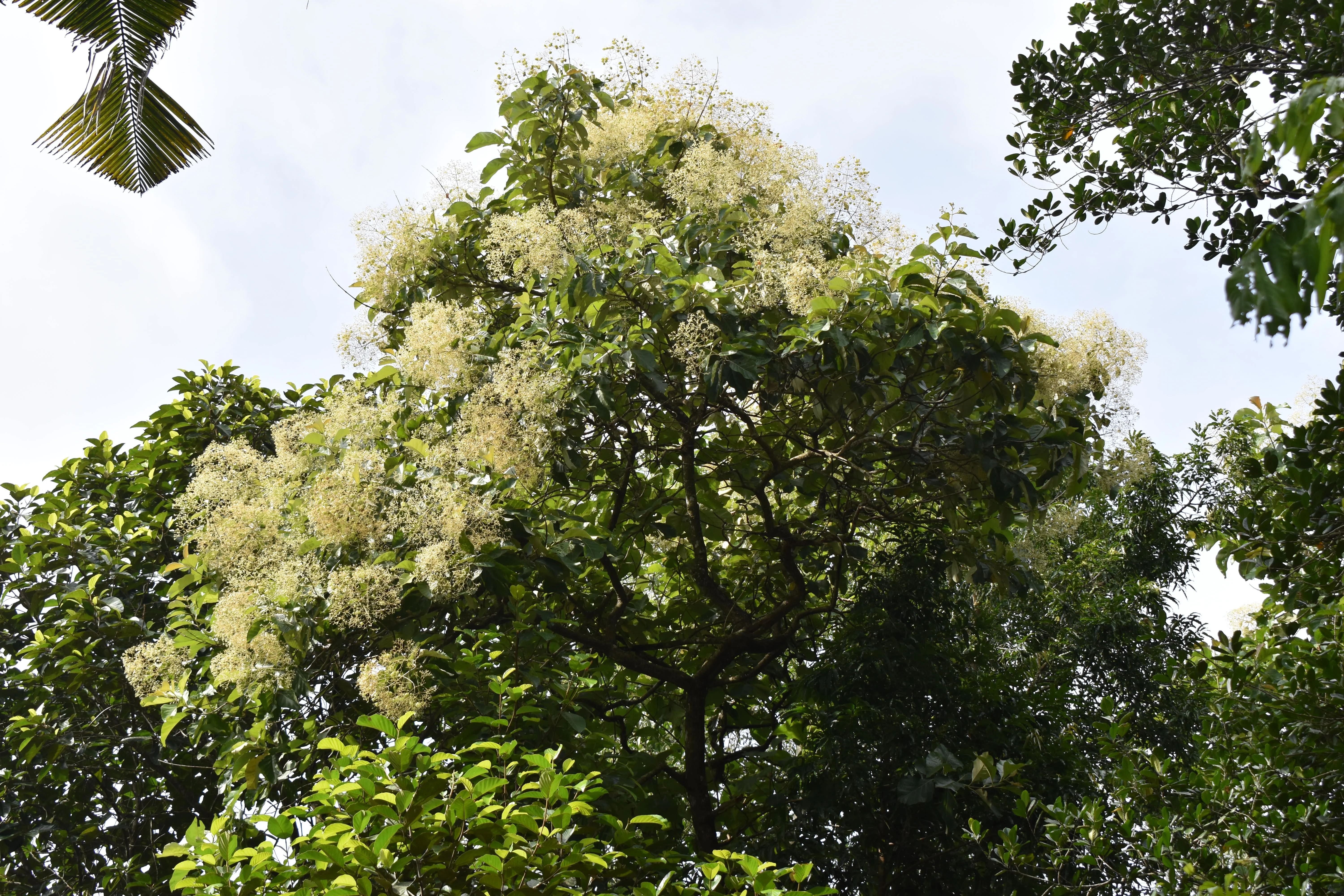
The teak tree is known for its strong and durable wood. It is mainly found in tropical countries and used to make high-quality furniture and ships.
Special Facts:
-
Has golden-brown hardwood
-
Resistant to water and insects
-
Commonly found in India and Southeast Asia
-
Leaves are large and rough in texture
-
Palm Tree
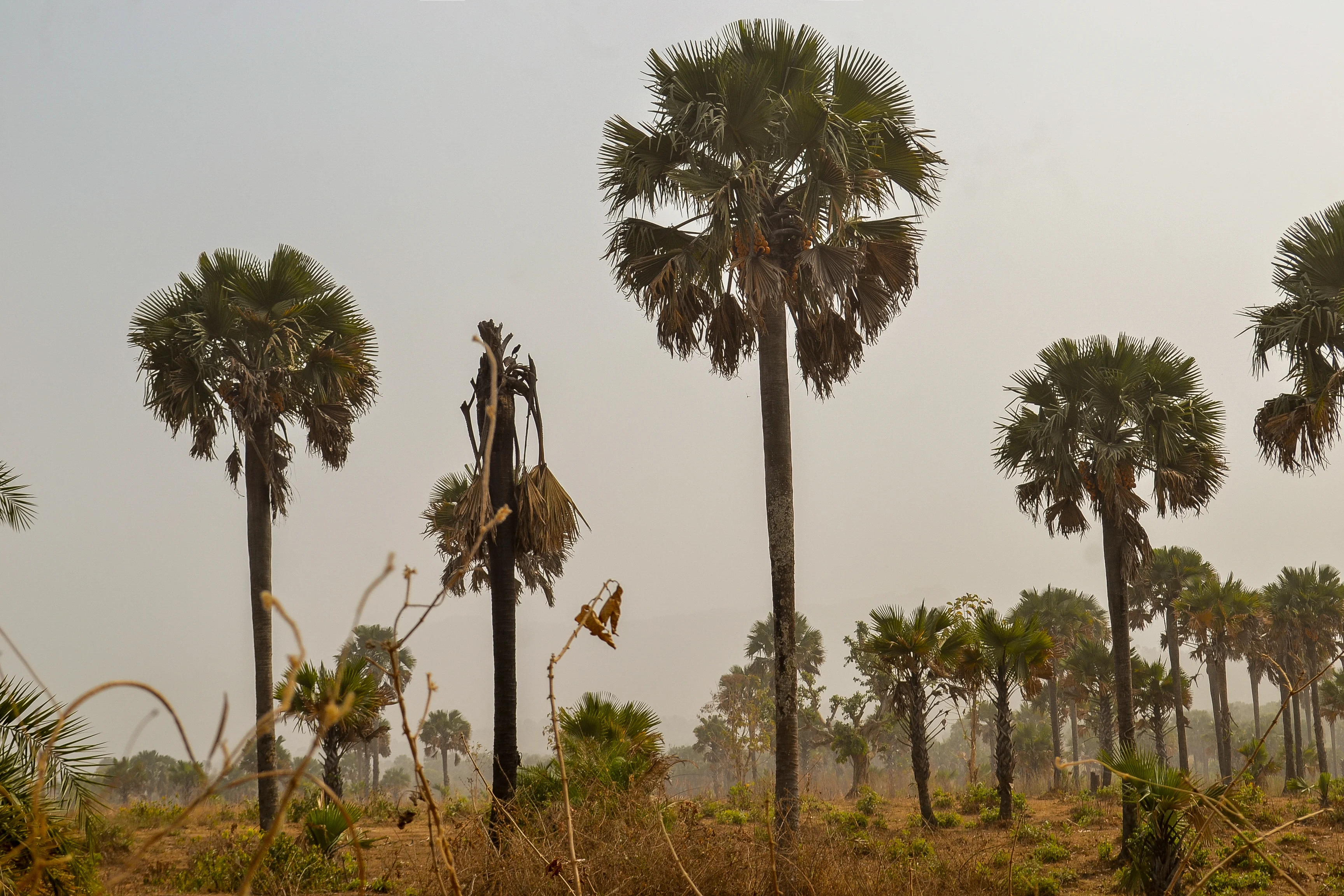
The palm tree grows in hot regions and has a tall, slender trunk with large, fan-shaped leaves. It gives coconuts, dates, and oil used in food and cosmetics.
Special Facts:
-
Commonly found in deserts and coastal areas
-
Represents tropical beauty and calm
-
Produces dates and coconuts
-
Can grow up to 70–100 feet tall
List of 200+ Tree Names in English
Trees are an important part of our environment. They provide us with oxygen, fruits, wood, and shade, and help keep the Earth healthy. Knowing different tree names helps students understand nature better and recognize the plants around them. Here is a list of more than 200 common tree names in English. These include fruit trees, flowering trees, evergreen trees, and other useful trees found across the world.
Common Tree Names
-
Mango Tree
-
Banyan Tree
-
Neem Tree
-
Peepal Tree
-
Coconut Tree
-
Apple Tree
-
Guava Tree
-
Palm Tree
-
Pine Tree
-
Teak Tree
-
Oak Tree
-
Maple Tree
-
Cherry Tree
-
Orange Tree
-
Banana Tree
-
Papaya Tree
-
Jackfruit Tree
-
Lemon Tree
-
Fig Tree
-
Almond Tree
Flowering Trees
-
Gulmohar Tree
-
Cassia Tree
-
Frangipani Tree
-
Silk Cotton Tree
-
Jacaranda Tree
-
Magnolia Tree
-
Laburnum Tree
-
Champa Tree
-
Bottlebrush Tree
-
Bauhinia Tree
-
Tulip Tree
-
Crape Myrtle Tree
-
Ashoka Tree
-
Flamboyant Tree
-
Golden Shower Tree
-
Coral Tree
-
Cherry Blossom Tree
-
Dogwood Tree
-
Wisteria Tree
-
Lilac Tree
Fruit-Bearing Trees
-
Peach Tree
-
Plum Tree
-
Apricot Tree
-
Pear Tree
-
Pomegranate Tree
-
Mulberry Tree
-
Olive Tree
-
Date Palm Tree
-
Sapodilla Tree
-
Custard Apple Tree
-
Tamarind Tree
-
Breadfruit Tree
-
Persimmon Tree
-
Avocado Tree
-
Starfruit Tree
-
Blackberry Tree
-
Strawberry Tree
-
Jujube Tree
-
Noni Tree
-
Carob Tree
Evergreen and Shade Trees
-
Eucalyptus Tree
-
Cedar Tree
-
Cypress Tree
-
Fir Tree
-
Spruce Tree
-
Hemlock Tree
-
Redwood Tree
-
Sequoia Tree
-
Alder Tree
-
Beech Tree
-
Birch Tree
-
Sycamore Tree
-
Elm Tree
-
Willow Tree
-
Poplar Tree
-
Aspen Tree
-
Mahogany Tree
-
Ebony Tree
-
Rosewood Tree
-
Ironwood Tree
Medicinal and Useful Trees
-
Sandalwood Tree
-
Arjuna Tree
-
Bael Tree
-
Amla Tree
-
Drumstick Tree (Moringa)
-
Camphor Tree
-
Clove Tree
-
Cinnamon Tree
-
Nutmeg Tree
-
Betel Nut Tree
-
Aloe Tree
-
Turmeric Tree (Curcuma)
-
Frankincense Tree
-
Myrrh Tree
-
Tea Tree
-
Coffee Tree
-
Cocoa Tree
-
Henna Tree
-
Sago Palm Tree
-
Karanj Tree
Tropical and Rainforest Trees
-
Kapok Tree
-
Mahua Tree
-
Rubber Tree
-
Breadnut Tree
-
Cashew Tree
-
Brazil Nut Tree
-
Cocoa Palm Tree
-
Bamboo Tree (technically grass, but tree-like)
-
Rain Tree
-
Cannonball Tree
-
Terminalia Tree
-
Sal Tree
-
Kadamba Tree
-
Simarouba Tree
-
Pongamia Tree
-
Acacia Tree
-
Albizia Tree
-
Flame Tree
-
Cassia Fistula Tree
-
Tamarillo Tree
Coniferous Trees
-
Larch Tree
-
Yew Tree
-
Juniper Tree
-
Douglas Fir Tree
-
Scots Pine Tree
-
White Pine Tree
-
Silver Fir Tree
-
Black Spruce Tree
-
Blue Spruce Tree
-
Redwood Giant Tree
-
Balsam Fir Tree
-
Ponderosa Pine Tree
-
Mountain Hemlock Tree
-
Norway Spruce Tree
-
Cedar of Lebanon Tree
-
Western Red Cedar Tree
-
Japanese Cedar Tree
-
Monterey Pine Tree
-
Sugar Pine Tree
-
Sitka Spruce Tree
Desert and Dry Region Trees
-
Cactus Tree (Saguaro)
-
Date Palm Tree
-
Mesquite Tree
-
Acacia Tortilis Tree
-
Desert Willow Tree
-
Palo Verde Tree
-
Joshua Tree
-
Ironwood Desert Tree
-
African Baobab Tree
-
Jujube Desert Tree
Rare and Exotic Trees
-
Dragon Blood Tree
-
Socotra Fig Tree
-
Monkey Puzzle Tree
-
Rainbow Eucalyptus Tree
-
Silk Floss Tree
-
Bottle Tree
-
Traveler’s Palm Tree
-
Sausage Tree
-
Silver Oak Tree
-
Tamarillo Tree
-
Cannonball Tree
-
Tulip Poplar Tre
-
African Tulip Tree
-
Kauri Tree
-
Monkeypod Tree
-
Kapok Ceiba Tree
-
Mangrove Tree
-
Pandanus Tree
-
Flame of the Forest Tree
-
Wollemi Pine Tree
Native and Regional Trees
-
Indian Gooseberry Tree
-
Indian Coral Tree
-
Indian Laburnum Tree
-
Indian Rosewood Tree
-
Indian Mahogany Tree
-
Indian Almond Tree
-
Indian Laurel Tree
-
Indian Coral Jasmine Tree
-
Indian Ash Tree
-
Indian Beech Tree
-
African Mahogany Tree
-
African Olive Tree
-
African Wattle Tree
-
African Teak Tree
-
African Tulip Tree
-
American Beech Tree
-
American Elm Tree
-
American Sycamore Tree
-
American Sweetgum Tree
-
American Chestnut Tree
Other Common Trees
-
Silver Birch Tree
-
Black Walnut Tree
-
White Oak Tree
-
Red Maple Tree
-
Sugar Maple Tree
-
Hornbeam Tree
-
Beechwood Tree
-
Holly Tree
-
Laurel Tree
-
Elder Tree
-
Hazelnut Tree
-
Rowan Tree
-
Hawthorn Tree
-
Juniper Berry Tree
-
Olive Laurel Tree
How Trees Help Us
Trees play a vital role in maintaining balance in nature and supporting all living beings. From giving us clean air to offering food and shelter, trees truly make our world better in many ways.
-
They give us clean air: Trees take in carbon dioxide and give out oxygen, which we need to breathe.
-
They provide shade: On hot days, trees keep us cool with their shade.
-
They give us food: Many trees give us fruits like apples, mangoes, and oranges.
-
They are homes for animals: Birds, squirrels, and many insects live in trees.
-
They prevent soil erosion: Tree roots hold the soil together and prevent it from washing away.
-
They give us wood: We use wood from trees to make paper, furniture, and houses.
-
They make our surroundings beautiful: Trees add beauty to our parks, streets, and gardens.
Frequently Asked Questions on Tree Names
Q1. What is the name of five trees?
Answer: Apple, Mango, Oak, Banyan, and Pine are common examples from different categories, including fruit trees, deciduous trees, and evergreen trees.
Q2. What is the name of our national tree?
Answer: The national tree is the Indian banyan tree (Ficus benghalensis), which was adopted in 1950. It is revered for its longevity, extensive root system, and cultural and religious significance.
Q3. What is the scientific name of the neem tree?
Answer: Azadirachta indica. Neem (Azadirachta indica) is a fast-growing tree that can reach a height of 15–20 meters. The tree has a woody, erect, cylindrical stem that branches out as it matures.
Q4. What is the scientific name of the banyan tree?
Answer: The common Name is Banyan Tree, and the scientific name is Ficus benghalensis.
Q5. What is the scientific name of the coconut tree?
Answer: Cocos nucifera (L.) (Arecaceae) is commonly called the “coconut tree” and is the most naturally widespread fruit plant on Earth.
Q6. What is the scientific name of the mango tree?
Answer: Mangifera indica, commonly known as the mango after its fruit, is an evergreen species of flowering plant in the family Anacardiaceae.
Q7. How did Bodhi Tree get its name?
Answer: The Bodhi tree gets its name from the Sanskrit word "bodhi," which means "awakening" or "enlightenment". The tree became known as the Bodhi tree because it was under this specific peepal tree that Siddhartha Gautama achieved spiritual enlightenment and became the Buddha.
Q8. What is the name of the Christmas tree?
Answer: There is no single name for a "Christmas tree," as it refers to any evergreen tree that is decorated for the holiday season, such as the Norway Spruce, Fraser Fir, Balsam Fir, or Douglas Fir.
Q9. What is the scientific name of the banana tree?
Answer: The scientific name for the banana is primarily Musa spp., which is a general classification for the genus. Specific common cultivated types have more detailed names, such as Musa acuminata and Musa balbisiana, or their hybrids.
Admissions Open for
Admissions Open for
CBSE Schools In Popular Cities
- CBSE Schools in Bangalore
- CBSE Schools in Mumbai
- CBSE Schools in Pune
- CBSE Schools in Hyderabad
- CBSE Schools in Chennai
- CBSE Schools in Gurgaon
- CBSE Schools in Kolkata
- CBSE Schools in Indore
- CBSE Schools in Sonipat
- CBSE Schools in Delhi
- CBSE Schools in Rohtak
- CBSE Schools in Bhopal
- CBSE Schools in Aurangabad
- CBSE Schools in Jabalpur
- CBSE Schools in Jaipur
- CBSE Schools in Jodhpur
- CBSE Schools in Nagpur
- CBSE Schools in Ahmednagar
- CBSE School In Tumkur











